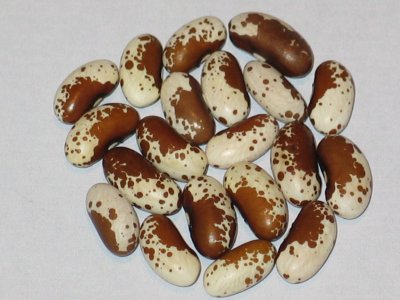BeanWonderin
Deeply Rooted
Thank you all for contributing such interesting and informative content here. Do you know last year it was end of July before we got to page 30 in this thread? Maybe this will be a record year for beans!
I would like to know if anyone has a trick for getting beans to germinate. I’ve been testing germination (beans and corn, mostly) and I cannot get my Pawnee beans to germinate well. I get maybe one out of ten.
I figure something must have happened to these when I grew them or in storage, but haven't noticed this with my other beans. These are beans I grew last in 2019.

My standard test is to place 10 beans in a damp paper towel inside a zipper lock bag. I've run three tests on Pawnee this year with only one or two germination each time. The ones that don't germinate get moldy.

Here are a few things I've tried. I'd like your thoughts or ideas for anything else to try.

It was actually the Pawnee bean that helped me find your website, @Bluejay77, and then this forum - thanks! We've grown Pawnee several years. They have grown well for us and produced a good harvest, plus we like cooking with them. I don't know where we got the original seed and it doesn't look like anyone has carried it the last couple years - maybe Seeds of Change? At any rate, we hope to grow it again.
One thought I had is that I could pre-germinate a bunch prior to planting in the garden so I don't end up with a patchy planting. I have a few hundred grams of seed, so I could still get a harvest - certainly enough to save the seed. But I would like to learn how to make sure my seed retains viability better next time.
I would like to know if anyone has a trick for getting beans to germinate. I’ve been testing germination (beans and corn, mostly) and I cannot get my Pawnee beans to germinate well. I get maybe one out of ten.
I figure something must have happened to these when I grew them or in storage, but haven't noticed this with my other beans. These are beans I grew last in 2019.
My standard test is to place 10 beans in a damp paper towel inside a zipper lock bag. I've run three tests on Pawnee this year with only one or two germination each time. The ones that don't germinate get moldy.
Here are a few things I've tried. I'd like your thoughts or ideas for anything else to try.
- I've tried different temperatures. Probably mid 60's and mid 70's Fahrenheit. Suzanne Ashworth lists 60-85 deg F as the germination range for common beans in Seed to Seed. I did not notice a difference.
- I've tried pre-soaking in water for 5-10 minutes. My standard method is to start with the beans dry, but thought I might get a head start this way. It did not seen to make a difference.
- I tried pre-soaking in a bleach water solution for 5-10 minutes then rinsed. Some of the beans wrinkled a bit and a few turned yellow when I took them out of the solution. This batch did not mold, but none of them really germinated. One looked like it was close.
It was actually the Pawnee bean that helped me find your website, @Bluejay77, and then this forum - thanks! We've grown Pawnee several years. They have grown well for us and produced a good harvest, plus we like cooking with them. I don't know where we got the original seed and it doesn't look like anyone has carried it the last couple years - maybe Seeds of Change? At any rate, we hope to grow it again.
One thought I had is that I could pre-germinate a bunch prior to planting in the garden so I don't end up with a patchy planting. I have a few hundred grams of seed, so I could still get a harvest - certainly enough to save the seed. But I would like to learn how to make sure my seed retains viability better next time.

